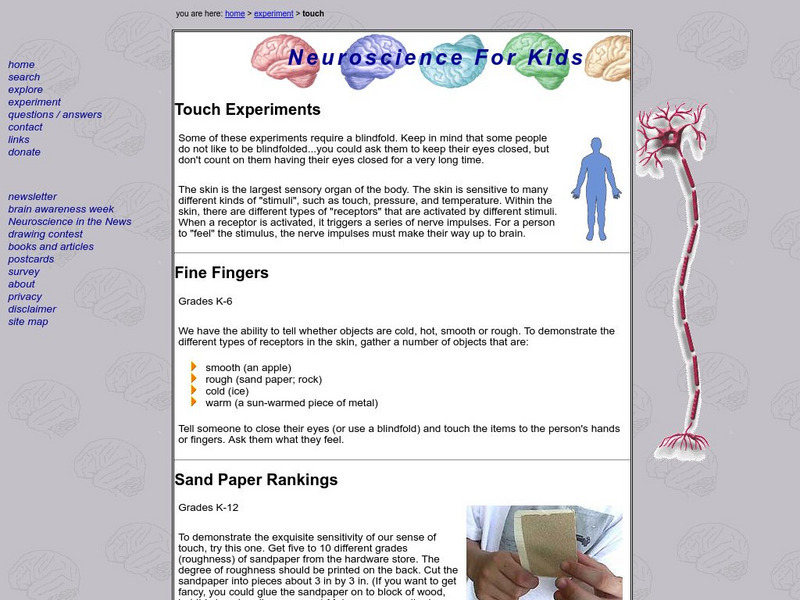Curated OER
Nature's Recyclers
Young scholars create environments to demonstrate how earthworms interact with their surroundings.
Curated OER
Let's Take a Trip!
Sixth graders plan trip for family of four, and choose best travel plan by studying maps, considering different routes, and visiting Web sites to get airline and travel schedules.
Curated OER
Heroic Images: Visualization and Media Messages
Pupils examine media messages. In this media awareness instructional activity, students analyze online messages about heroism as they complete a jigsaw reading activity.
Curated OER
Classification and Attributes
Middle schoolers classify objects based on their attributes. They explain how archaeologists use classification to help answer research questions.
Curated OER
Birds of a Feather
Students investigate birds and complete a variety of bird-themed activities. They read books and observe birds noting their physical characteristics, development and life cycle stages.
Curated OER
Fractions, Decimals, and Percents
Students connect different mathematical concepts. They create a circle graph. Students then create a question in which they collect data in order to convert fractions to decimals and decimals to percents.
Curated OER
Who's Who at Our School?
Learners recognize and use language appropriately for varied contexts and purposes. Students integrate listening, speaking, viewing, reading, and writing for multiple purposes. Learners develop and use a variety of strategies to plan,...
Curated OER
Project Based Learing: Social Responsibility
Young scholars explore social responsibility. In this service learning lesson, students participate in 4 weekly activities that require them to research "communitarians", write poems about their contributions, and create works of...
Curated OER
Find a Character, Tell a Story
Fourth graders choose a character from a magazine, complete a character sketch, and develop a short story placing this character in a situation. They utilize a worksheet imbedded in this plan which guides them through creating their...
Curated OER
Group Foraging
Students explore co-operation by researching ocean life. In this fish science activity, students identify many vocabulary terms associated with oceanography and discuss what group foraging means among fish. Students utilize paints and...
Curated OER
Flowering Philanthropy
Students plant flowers for others. They care for flowers. They summarize experiences through drawing, discussions and writing.
Curated OER
Geo-Vistas
Students create a geometric cardboard sculpture covered with personal drawings.
Curated OER
Silly Nilly
Fourth graders create their own stories with a life instructional activity and illustrate them.
Curated OER
Encoded Meanings
Students explore symbols in art and complete related activities. In this art symbols lesson, students compare symbols they recognize to those of an African culture. Students create a collaborative work of art with symbols that have an...
Curated OER
Visual Learning: A Slow, Press-ious Process
Students observe a photograph and make inferences. In this investigative lesson students study how to find facts in pictures and draw inferences from them.
University of Washington
The Senses
This site has a collection of learning activities, games, experiments, and lesson plans on the five senses. Organized by grade level and topic, this site is packed with an assortment of interactive and engaging activities, that would...
eSchool Today
E School Today: Your Revision Notes on the Five Senses
Learn how the sense organs are structured and how they function to provide you with five senses.
Frontiers Media
Frontiers: Seeing With Your Ears: A Wondrous Journey Across the Senses
For dozens of years it has been believed that the brain is organized into "sensory areas": that is, that there is a "visual area," an "auditory area," and so forth, and that the visual area can only process visual information. It has...
Scholastic
Scholastic: Study Jams! Science: The Human Body: The Senses: Touching
Self-playing slideshow, with an accompanying quiz, explains how the skin, as a sense organ, allows us to touch and feel.
University of Washington
University of Washington: Neuroscience for Kids: Smell Experiments
Describes experiments students can do to investigate the sense of smell. The experiments target either grades K-6 and 3-12.
McGraw Hill
The Mc Graw Hill Companies, Inc.: Sense of Smell
This informative site provides information on the olfactory receptors, olfactory epithelium, and olfactory bulb. Detailed drawing supplement the text along with an animation that depicts the movement of molecules through the nose.
Mind My Education
Mind My Education: The Life of Environments
This extensive lesson plan covers various topics about how animals interact with their environment. Topics include how animals sense their environment, how environments and organisms change together, and how animals use their senses to...
University of Washington
University of Washington: The Senses Touch
Do you know what the largest sensory organ of the body is? Use this site on skin and its sense of touch to learn more.























